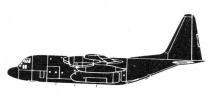Incident Overview

Description
A KLM Douglas DC-2 (PH-AJU, named “Uiver”) crashed near Rutbah Wells, Iraq, killing all 7 occupants. The airplane operated on a Christmas mail and passenger flight from Amsterdam-Schiphol Airport, the Netherlands to Batavia (now named Jakarta, Indonesia). En route stops were made at Marseille (France), Rome (Italy), Athens (Greece) and Cairo (Egypt). PH-AJU departed Cairo-Almaza Airport at 23:30 local time (21:30 UTC). The flight crew had not yet decided whether to land at Gaza, Rutbah or Baghdad. En route it was decided not to land at Gaza. Last radio contact was at 00:11 UTC with the radio operator at Rutbah. The flight entered a rainstorm and descended until impacted the ground in a 17ø right hand bank and 12ø nose down attitude. The airplane crashed and burst into flames. The “Uiver” was one of the 20 participants in the MacPherson Robertson London-Melbourne air race during in October 1934. It made a famous night time forced landing on a racing track in Albury (Australia), but managed to win the handicap race. 1. The cause of the accident is probably not related to a fire, in-flight break-up or lightning, nor related to failures of a technical nature. 2. It is very likely that the very unfavorable weather conditions along with less favorable handling characteristics of the airplane in severe turbulence and fatigue of the pilot have resulted in a collision with the ground, which caused the catastrophe.
Primary Cause
Unfavorable weather conditions, pilot fatigue, and turbulence combined with a lack of decisive landing decisions led to the collision with the ground.Unfavorable weather conditions, pilot fatigue, and turbulence combined with a lack of decisive landing decisions led to the collision with the ground.Share on:




